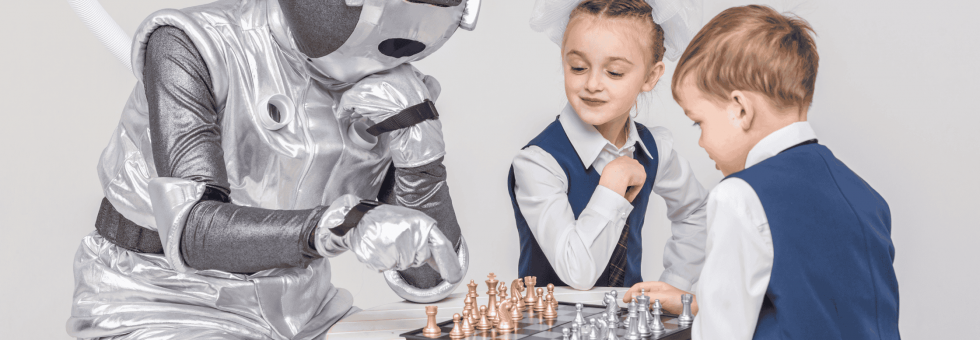Introduction to Reinforcement Learning in Games
Reinforcement Learning (RL) is a type of machine learning where an agent learns how to behave in an environment by performing actions and receiving feedback in the form of rewards or penalties. In the context of games, RL is used to teach AI how to play and improve over time by interacting with the game environment. RL has been successfully applied to a wide range of games, including classic arcade games, board games, and even complex 3D video games.
How does it work?
- In reinforcement learning, the agent observes the current state of the game, chooses an action based on this state, and receives feedback (reward) after performing the action. The goal is to maximize the cumulative reward over time by learning which actions lead to the best outcomes.
- The agent may initially take random actions, but over time, it learns which actions lead to higher rewards, allowing it to improve its performance.
Key Techniques in Reinforcement Learning for Games
- Q-Learning:
- Q-Learning is a model-free reinforcement learning algorithm that aims to learn the value of an action taken in a particular state. The agent learns a Q-table, where each entry represents the value (or expected future reward) of a particular state-action pair.
- Deep Q-Networks (DQN):
- Deep Q-Networks combine Q-learning with deep learning. Instead of using a Q-table, DQN uses a neural network to approximate the Q-values. This is particularly useful for environments with large state spaces, such as video games.
- Policy Gradients:
- Policy Gradient methods directly optimize the policy (the mapping from states to actions) without needing to use a value function like Q-learning. These methods are typically used in environments with continuous action spaces, as opposed to discrete action spaces.
Example: Training an AI to Play Pong Using OpenAI Gym
OpenAI Gym provides a variety of environments for testing and training reinforcement learning agents. One of the classic environments is Pong, an arcade game where the objective is to bounce a ball back and forth using paddles.
In this example, we’ll use OpenAI Gym to train an AI to play Pong by randomly choosing actions, though this approach can be extended with RL algorithms like Q-Learning or DQN to improve performance.
Code Snippet: Training an AI to Play Pong
import gym
# Create the Pong environment
env = gym.make("Pong-v0")
# Reset the environment to start a new game
state = env.reset()
# Run the game for 1000 steps
for _ in range(1000):
# Choose a random action from the action space
action = env.action_space.sample()
# Take the action, receive the new state, reward, and whether the game is over
state, reward, done, info = env.step(action)
# Render the game environment (for visual feedback)
env.render()
# If the game is over, reset the environment for a new game
if done:
state = env.reset()
# Close the environment after the game ends
env.close()
Explanation of the Code:
- Creating the Environment:
- We use
gym.make("Pong-v0")to create an environment where the AI will play Pong.Pong-v0is one of the classic environments in OpenAI Gym. - Resetting the Environment:
state = env.reset()initializes the environment, setting it up for a new game. Thestateholds the current observation from the game.- Choosing and Taking Actions:
- The AI randomly chooses an action using
action = env.action_space.sample(), whereaction_spaceis a predefined set of actions the AI can take in the game. - Updating the Environment:
state, reward, done, info = env.step(action)updates the game state based on the action taken. Therewardindicates how good or bad the action was (positive or negative feedback). Thedoneflag indicates if the game is over.- Rendering the Game:
env.render()is called to visually display the game for the user, which allows us to observe how the AI is performing.- Resetting After a Game:
- If the game ends (
doneis True), the environment is reset to start a new game. - Closing the Environment:
- After the loop completes,
env.close()ensures that resources are freed.
Conclusion
Reinforcement learning has proven to be an effective method for training AI to play games. By interacting with the game environment and receiving rewards for good actions, the AI can gradually improve its performance. With advanced techniques like Deep Q-Networks (DQN) or Policy Gradients, AI can be trained to play increasingly complex games, achieving superhuman performance in many cases.
In this article, we demonstrated a simple approach to training an AI to play Pong using OpenAI Gym, but there are many ways to improve performance by applying more sophisticated RL algorithms. As you gain experience with reinforcement learning, you’ll be able to tackle more challenging environments and create agents that can perform well across a wide range of games.
FAQs
- What is the difference between Q-Learning and Deep Q-Networks (DQN)?
- Q-Learning uses a table to store Q-values, which can be inefficient for large state spaces. DQN replaces the Q-table with a neural network to approximate the Q-values, making it suitable for environments with large or continuous state spaces.
- How can I improve the performance of the AI in this example?
- Instead of choosing actions randomly, you could implement a more sophisticated RL algorithm like Q-Learning or Deep Q-Networks (DQN) to help the AI learn the best actions based on rewards, improving performance over time.
- Can I use reinforcement learning for more complex games?
- Yes! RL can be applied to more complex games, including 3D games and real-world robotics simulations. Frameworks like Unity ML-Agents provide environments for more advanced RL tasks beyond the capabilities of OpenAI Gym
Are you eager to dive into the world of Artificial Intelligence? Start your journey by experimenting with popular AI tools available on www.labasservice.com labs. Whether you’re a beginner looking to learn or an organization seeking to harness the power of AI, our platform provides the resources you need to explore and innovate. If you’re interested in tailored AI solutions for your business, our team is here to help. Reach out to us at [email protected], and let’s collaborate to transform your ideas into impactful AI-driven solutions.





